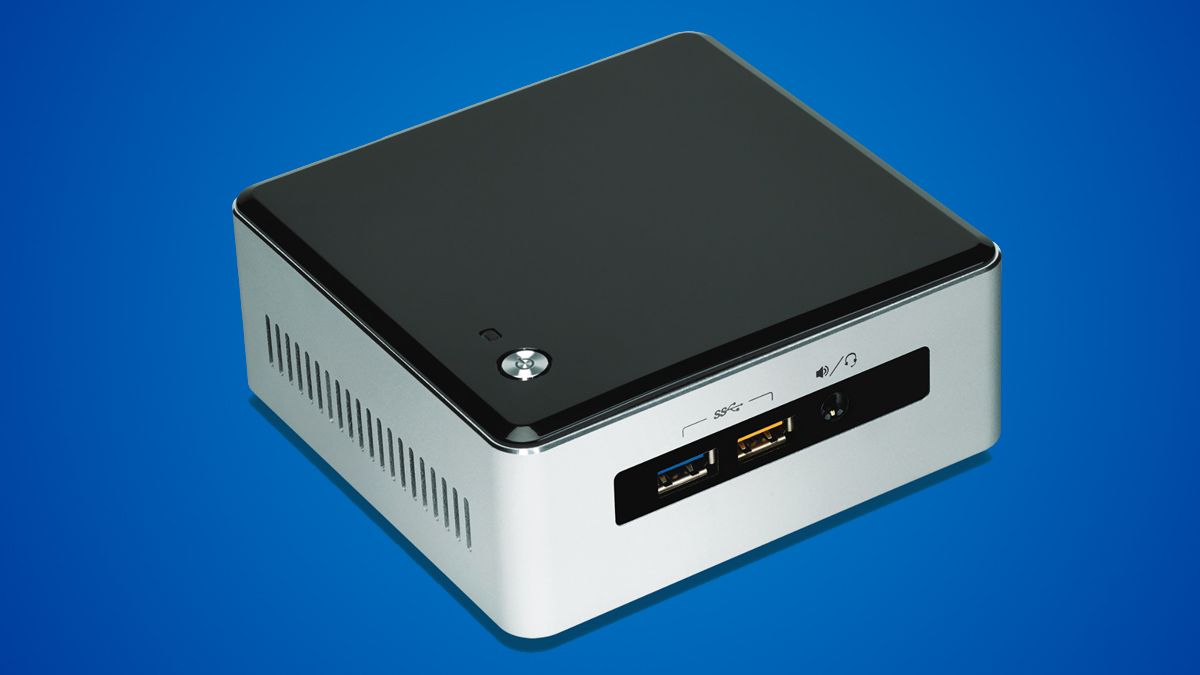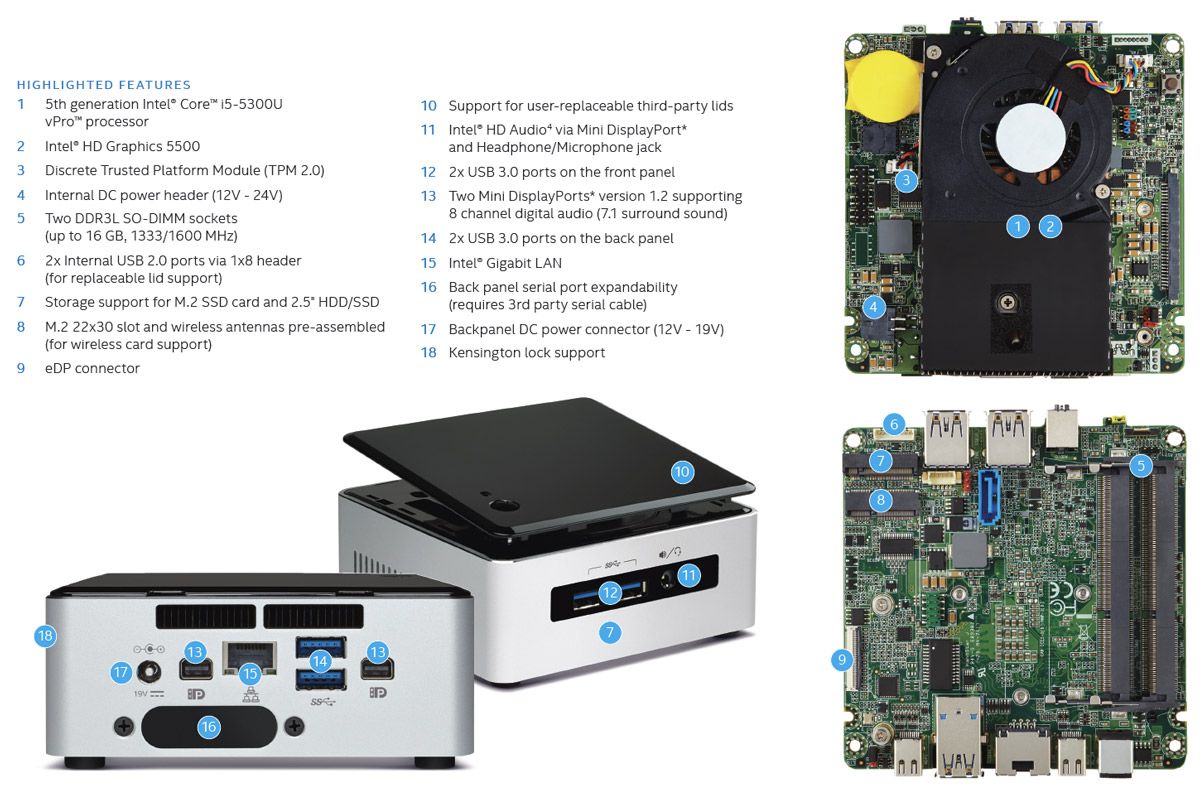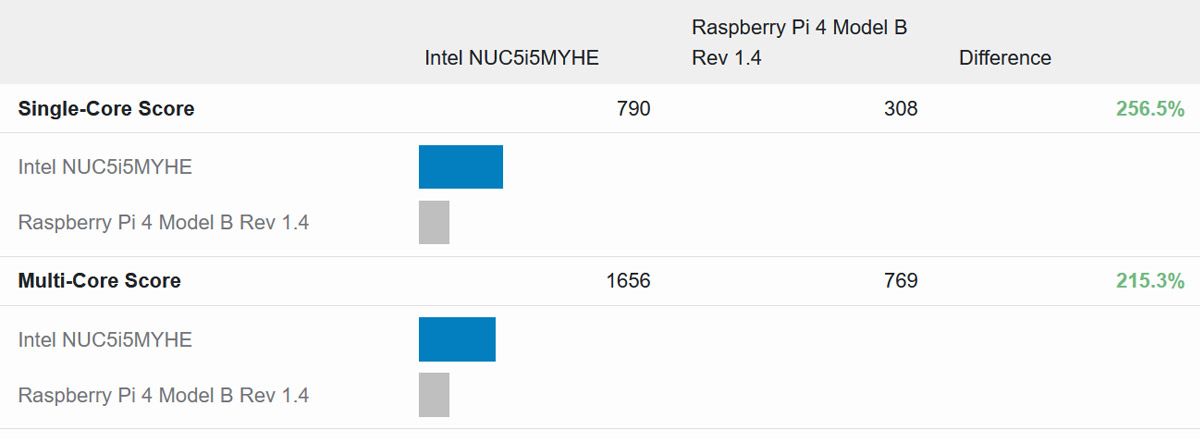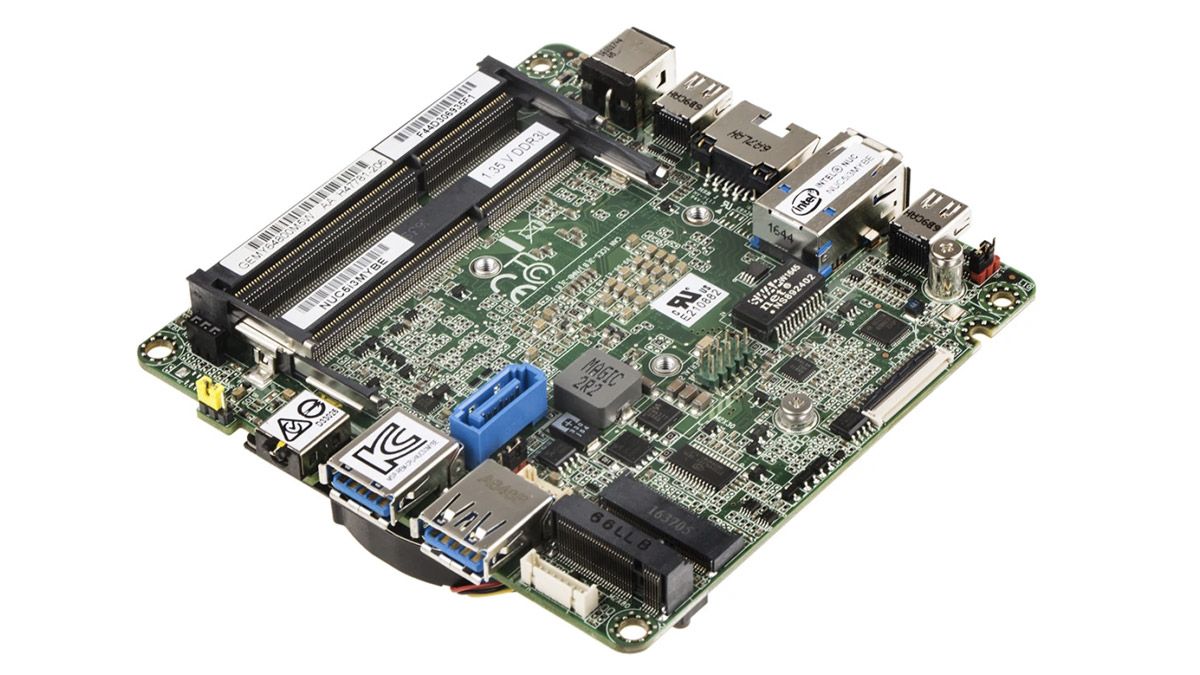Quick Links
Raspberry Pi 4 microcomputers are a hot commodity, so hot that prices are significantly inflated. So forget overpaying for a Pi, buy a used NUC instead---it's a much better value.
The Pi Shortage Pricing Changes the Equation
If the Raspberry Pi was consistently in stock and selling for the MSRP, the pricing for the Raspberry Pi 4 boards would range from $35 for the base 1GB model up to $75 for the 8GB model.
That sweet $35 price point is one of the best things about the Raspberry Pi and exactly why the Pi has become the foundation of so many projects. We love the Pi, and over the years, we've written lots of tutorials about it. I've used Pi boards for media centers, home servers, hobby projects, you name it. So it's safe to say we're big fans.
But shortages that started in 2020 and remain ongoing have changed the landscape. You can't get your hands on a Pi board for $35 right now (and you won't be able to for the foreseeable future). Now your best bet to get a Pi is to shop on auction sites like eBay---but instead of paying $35-70, you're paying $125 to $175. In many instances, that's just for the bare board with no case, storage, or power supply.
Throw in a nice case, quality power supply, and a good microSD card, you're out another $30-40. You've always had to buy the extras for Pi boards, but spending $30 on top of a $35 board is a lot more palatable than spending $30 on top of a $150 board you got at scalper pricing.
And at those price points, the "Wow, I'm getting a lot of microcomputer for $35!" excitement goes right out the window, and you should consider spending the money on something else instead. Enter the Intel NUC. Let's take a closer look.
In This Market, Used NUCs Are a Much Better Value
If you're unfamiliar with NUCs, here's a quick summary. Introduced by Intel in 2013, a NUC (or Next Unit of Computing) is a very small form factor PC. We're talking a lilliputian 5x5x2 inches or so.
If you buy a brand new current-gen NUC, you can expect to spend as much as you would on a more traditional computer---anywhere from $350-900, depending on the hardware inside.
While getting current-gen hardware packed into a tiny little box is pretty cool, we're not interested in looking at a brand-new cutting-edge NUC. After all, we're considering replacing a $35 hobby board with something of equal or greater value while staying at or below the $125-$175 prices people are charging on eBay for Raspberry Pi 4 units.
The solution? Used NUCs. If you hit up eBay, the place is just drowning in used NUCs. All day, every day, there is a constant flow of old NUC models. So let's consider why you should consider picking up a used NUC kit off eBay instead of paying Pi scalper prices.
You Get More Hardware for Your Money
On any given day, you can find NUC kits on eBay for the same price point as a marked-up Raspberry Pi 4 (and usually even lower).
$125 might get you a Pi 4 board, but $125, shopping for a used NUC, will get you an i3 or i5 processor, 4-8GB of RAM, usually with storage included, a case, a power adapter, and---if it matters to you or your project goals---often times with Windows 10 Pro throw in on top.
The screenshot above highlights the specs of the 2015-era NUC5i5MYHE. You can find these things, RAM and drives included, on eBay for under $100.
If you're willing to gamble on an "as-in" model missing the power adapter or just a more barebones option that has the power adapter but doesn't ship with storage, you can go even lower. Lots of resellers have veritable mountains of old NUCs, and they'll note that they haven't tested them.
They're selling them "as-in," but that doesn't usually mean broken. That means the seller has neither the time nor inclination to test every single one. We routinely see $50-75 NUCs that are more powerful than a Pi, but either haven't been tested or are simply missing a $20 power adapter.
The Hardware Is More Powerful
Unless you're buying the oldest NUCs, and Celeron-based ones at that, NUC hardware runs laps around even Pi 4 (and outright blows any earlier Pi models out of the water).
Even a mid-2010s NUC with a better-than-Celeron processor will outperform a Pi by 200% easy. If you're curious to compare stats, you can always use this Raspberry Pi 8GB Geekbench test as your baseline and then use the search function on Geekbench Browser to look at builds comparable to the NUC you're considering. Here's the link to the NUC5i5MYHE vs. Pi stats seen in the screenshot above.
Once you get beyond using the Pi as a simple hobby board or a lightweight computer, it really pays off to have more power.
There is also a benefit to the machine running an x86 processor in terms of power and flexibility. You'll have more options regarding what you can run on it, and it will handle running concurrent resource-heavy tasks better.
The Storage Is Faster and More Stable
Poke around any hobby forum for a hobby where people frequently use Raspberry Pi models for things, like the Home Assistant community, and you'll quickly find people lamenting the limitations of the Pi's storage.
The Pi's default SD card storage might be OK for some projects but anything that requires lots of frequent reading and writing will quickly not only reveal the limitations of the medium but will wear it out. You can work around that and add external storage to the Pi to help alleviate the problem, but it's still a problem.
The NUC, on the other hand, uses more traditional storage. Depending on the model, you'll either have the ability to use an M.2-style SSD, a regular 2.5" drive (SSD or HDD), or both---plus whatever you want to add via the USB3 ports.
NUCs Are Semi-Upgradable
You can't replace the CPU or GPU on a NUC as they are integrated right into the board. You can, however, upgrade the memory and storage.
If you find a good deal on a NUC and it doesn't have as much memory as you'd like, you can just buy more. Same thing if you get it home, spin up your server or whatever other project, and find that you need more. With the Pi, you'll either have to buy a new board or give up because the boards max out at 8GB.
Same thing with storage. Maybe the little 120GB SSD drive that came with the used model is more than enough for your needs, but if it isn't, it's trivial to upgrade.
Power Use Isn't As Different As You'd Think
The older generation Raspberry Pi's were legendary in terms of power usage. You could power them off a good quality cellphone charger.
A Pi 3 would consume about 1.5W at idle and about 3.5W under heavy load. The Pi 4 consumes about 4W while idling and 7W under load. That's still pretty great---running your Pi 4 under load uses about as much power as leaving on an LED light bulb.
NUCs do consume more energy, but not as much as you'd think. Most NUCs consume around 5-10W at idle. The power consumption increases from there based on load and how powerful the NUC in question is, but for tasks equivalent to what you would otherwise have used the Pi for, you likely won't hit more than 15W or so.
For tasks beyond what the Pi could have handled, most low to mid-level NUCs aren't going to break 35-45W---and that's only when under heavy load.
So, realistically, your NUC will likely hover around 10-15W most of the time. For the sake of comparison, let's say the Pi averages 6W over the year and the NUC averages 15W. At 12 cents per kWh, leaving them run for a year would cost $6.31 and $15.78, respectively.
Given the massive boost in performance that comes with swapping out the Pi for even a modest NUC, that's not bad at all.
So until Raspberry Pi boards are more available---and even when they are, if you need a more robust microcomputer for your projects---it's pretty hard to beat the value a used NUC to fill the gap.




